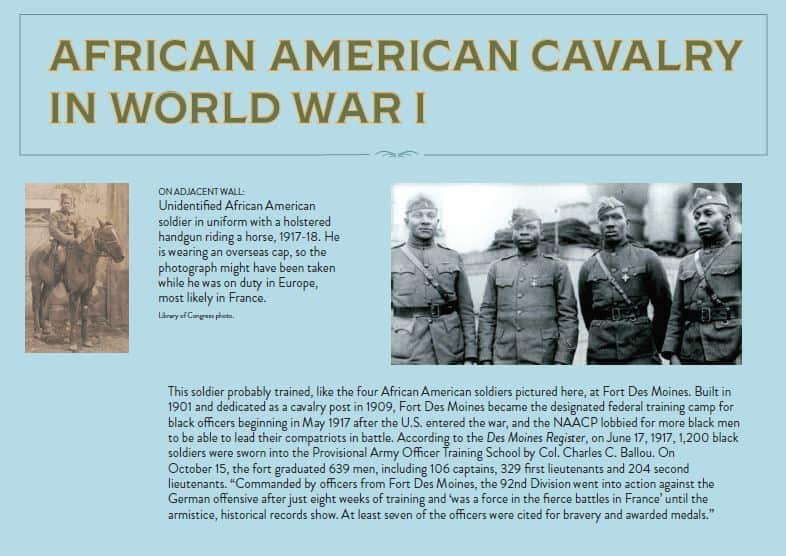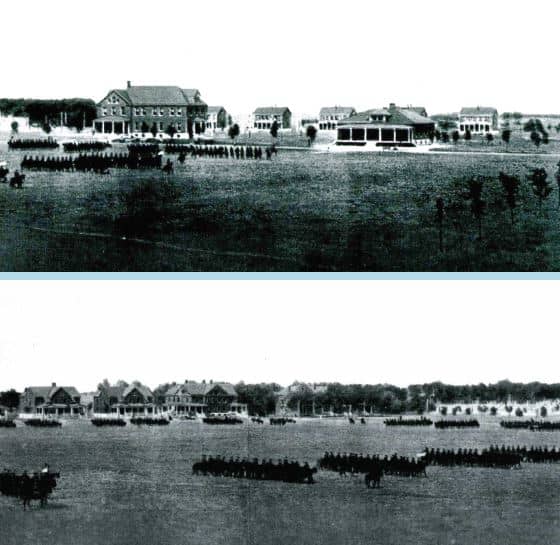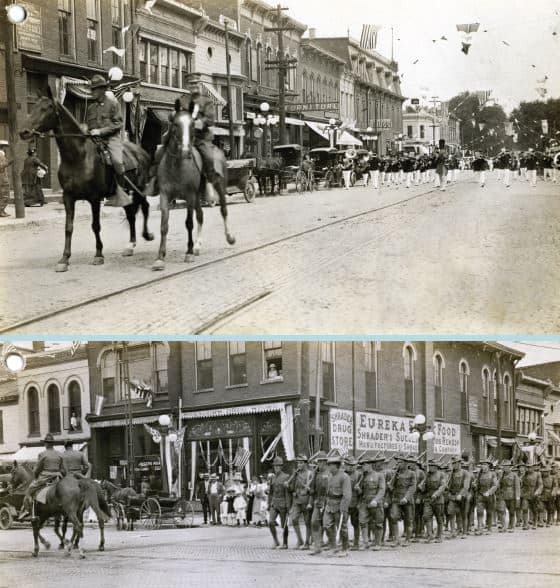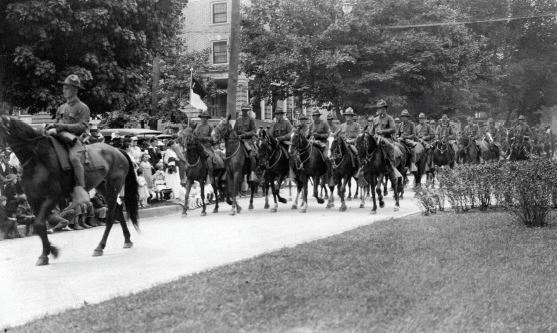
Built in 1901 and dedicated as a cavalry post in 1909, Fort Des Moines became the designated federal training camp for Black officers beginning in May 1917 after the U.S. entered the war, and the NAACP lobbied for more Black men
to be able to lead their compatriots in battle. According to the Des Moines Register, on June 17, 1917, 1,200 Black
soldiers were sworn into the Provisional Army Officer Training School by Col. Charles C. Ballou. On October 15, the fort graduated 639 men, including 106 captains, 329 first lieutenants and 204 second lieutenants. “Commanded by officers from Fort Des Moines, the 92nd Division went into action against the German offensive after just eight weeks of training and ‘was a force in the fierce battles in France’ until the armistice, historical records show. At least seven of the officers were cited for bravery and awarded medals.”
The photograph of four officers is from Images of America: Fort Des Moines by Penelope A. LeFew-Blake.

Courtesy of the State Historical Society of Iowa – Iowa City
The pages above from the 1917 book Colored Officers’ Training Camp provide portraits of officers of different ranks at Fort Des Moines.

from Images of America: Fort Des Moines by Penelope A. LeFew-Blake
The above photographs from Images of America: Fort Des Moines depict cavalry regiments training on the grounds. In this era when armed forces depended on horses, a cavalry officer was incomplete without his horse; his mount provided his power, mobility, authority, and identity. Cavalry soldiers of all ranks had to be competent horsemen. Officers were the most powerful, but they were also the most conspicuous and potentially the most vulnerable; thus, they had to be superior riders, melding with their mounts through their lower bodies.
Horses were increasingly replaced by mechanical vehicles after World War I. The last horse cavalry charge by a U.S. Army cavalry unit took place against Japanese forces during the fighting in the Bataan Peninsula, Philippines, in the village of Morong on January 16, 1942. Later that year, these cavalry stables at Fort Des Moines became barracks for the WAACs (Women’s Army Auxiliary Corp members).

Courtesy of the State Historical Society of Iowa – Iowa City
These images depict a parade c. 1915, during World War I but before the U.S. entry, in Iowa City near the corner of College and Clinton Streets. Mounted officers lead a marching band and foot soldiers. This was also before Black soldiers were sworn into the Provisional Army Officer Training School at Fort Des Moines. No Black soldiers are visible in the photographs. Note the cobblestone streets lined with electric streetcar tracks and the mix of horse-drawn carriages and automobiles along the curb.

Courtesy of the State Historical Society of Iowa – Iowa City
Another Iowa City parade view, c. 1915, featuring members of the cavalry. Note the children sitting on the curb so close to the passing horses’ feet, an indication of how familiar people at the time still were with horses.
